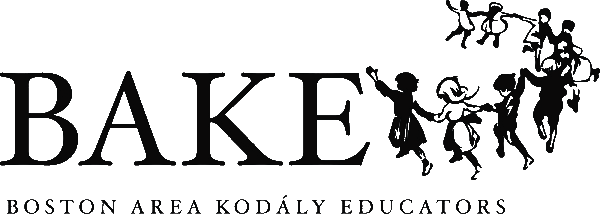The Kodály Philosophy of Music Education
Zoltán Kodály (1882-1967) was a visionary teacher, composer and philosopher whose work has influenced musicians and music educators around the world. Following his folk song collecting trips with Béla Bartók in Hungary in the early 1900s, Kodály conceived of a monumental idea: that music could be taught artistically using the traditional folk songs of a culture. Gathering talented, creative teachers around him, Kodály developed a philosophy of music education based on the radical idea of universal music literacy.
Singing is “the essence” of the concept. The voice is the universal instrument, free and accessible to all; it can be considered our own instrument. As Kodály said, “If we ourselves sing often, this provides a deep experience of happiness in music. Through our own musical activities, we learn to know the pulsation, rhythm, and shape of melody. The enjoyment given encourages the study of instruments and the listening to other pieces of music as well.” Kodály-inspired teachers believe that all children–barring rare physical limitations–can match pitch; tone deafness is simply a myth.
Experiencing music cannot begin too early. Music is the birthright of every child. The child’s first connection to music comes through the voices of the parents. Once, when Kodály was asked when music education should begin, he replied, “Nine months before the birth of the mother.”
Traditional folk music provides the best and most natural material for becoming a literate musician. Everyone has a mother tongue—the language spoken at home. The traditional folk music of that language provides the source from which the basic elements of music literacy can be drawn. Following the study of authentic folk songs of the native culture(s), we can then explore of the music of other cultures and connect traditional music with all styles of composed music.
Music literacy is like language literacy. Kodály once said, “We should read music in the same way that an educated adult will read a book: in silence, but imagining the sound.” He believed that musical literacy, like language literacy, is the right of every human being.
Using a sequential approach. Kodály-inspired teachers consider the culture and age of the student when developing a sequential curriculum, teaching easier melodic and rhythmic concepts and skills first, and building on their musical knowledge. We use developmentally appropriate literature, foster to their learning styles (physical, visual, and aural), and allow students experience music extensively before introducing notation and musical terms.
Quality music is the best material for teaching. Kodály believed that only the best music by the greatest composers and the most beautiful and representative folk music of the culture should be used. He said, “Let us take our children seriously! Everything else follows from this…only the best is good enough for a child.”

